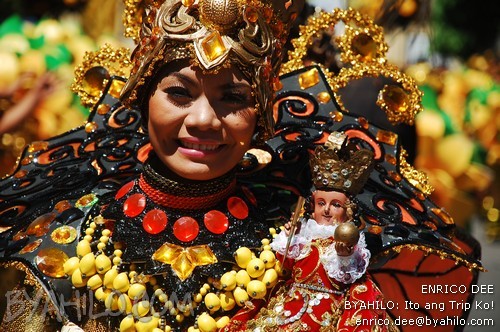Isabel: the industrial zone of Eastern Visayas

The municipality of Isabel is the site of the Leyte Industrial Development Estate (LIDE), a fully developed industrial area, which houses two of the country's major industries, the Philippine Associated Smelting and Refining Corporation (PASAR), and the Philippine Phosphate Fertilizer Corporation (PhilPhos). PASAR, a world-class refining company, produces copper cathodes. Among its by-products are dore metal, sulfuric acid and selenium powder. PhilPhos, on the other hand, is the largest producer of high grade fertilizer in Asia today. It also produces as by-product, gypsum, which is currently being used by the cement industry.
Isabel is a 1st class municipality in the province of Leyte , Philippines . According to the 2000 census, it has a population of 38,486 people in 8,303 households.
Isabel is the most industrialized town in Eastern Visayas, being the site of Leyte Industrial Development Estates (LIDE). Isabel has one higher institution of learning which is the Visayas State University - College of Industrial Technology, Isabel campus. It offers undergraduate degrees in education, industrial engineering, business and information technology and various two-year technological courses that caters the need of the local and national industry.
THE HISTORY
 Two hundred years ago, the municipality of Isabel was called Dupong, named after a kind of a deadly snake which infested a river found in the settlement. This name however, did not last long. When the Spanish missionaries ventured to the place to spread Christianity, they were surprised to find the natives lavishly entertaining them with a sweet tasting delicacy, the honey from wild bees. When the Spaniards asked the natives the place where they got the honey, they answered, "dugos sa quiot." This became the name of the settlement although it was shortened to Quiot. Several years later, Spanish as well as Filipino missionaries frequented the village to improve the moral and religious life of the inhabitants. In 1851, the Spaniards made Quiot into a municipality. After fifty two years, however, Quiot was merged into the town of Merida, Leyte by virtue of the Philippine Commission Act. No. 954.
Two hundred years ago, the municipality of Isabel was called Dupong, named after a kind of a deadly snake which infested a river found in the settlement. This name however, did not last long. When the Spanish missionaries ventured to the place to spread Christianity, they were surprised to find the natives lavishly entertaining them with a sweet tasting delicacy, the honey from wild bees. When the Spaniards asked the natives the place where they got the honey, they answered, "dugos sa quiot." This became the name of the settlement although it was shortened to Quiot. Several years later, Spanish as well as Filipino missionaries frequented the village to improve the moral and religious life of the inhabitants. In 1851, the Spaniards made Quiot into a municipality. After fifty two years, however, Quiot was merged into the town of Merida, Leyte by virtue of the Philippine Commission Act. No. 954.
There were various attempts made by prominent leaders to restore the municipality of Quiot. But all in vain. The people, despite their failures, remain undaunted. They sent a delegation to Malacañang to personally work for the approval of their petition to make Quiot a municipality. After a few months, the town was created by virtue of Republic Act No. 191 series of 1947 of the Congress of the Philippines and Proclamation No. 49, series of 1948 by President Manuel Roxas. The municipality was called Isabel in honor of the wife of Ex-Senator Carlos S. Tan who fathered the bill and of Queen Elizabeth of Spain during whose reign the former town of Quiot was officially created. On January 15, 1948, in conjunction with the celebration of the feast of Sr. Sto. Niño, the titular patron Saint of Isabel, the town of Isabel, Leyte was formally inaugurated.
THE PROFILE
 LOCATION
LOCATION
The municipality of Isabel is located in the western part of Leyte Province. It is surrounded by Palompon, Leyte on the north and the west; Ormoc Bay and Merida, Leyte on the south; and Ormoc City and Merida, Leyte on the east.
LAND AREA
Isabel is a coastal town which has a total land area of 9,750 hectares. Its terrain is generally considered as flat lands. The municipality has 24 barangays.
DEMOGRAPHY
Based on the 2000 Census of Population, the municipality has a total population of 38,486 with an average annual growth rate of 1.36 percent from 1995-2000. It has 8,303 households. In 2003, its population was estimated at 42,695. Majority of the people speak Bisaya and Cebuano.
HEALTH
The municipality has 1 health center, 1 private hospital, 2 medical clinics, 4 dental clinics, 32 day care centers, 1 center for the elderly and 5 barangay health stations.
Medical/health services is being carried out by 21 medical/health workers, 85 active barangay health workers (BHWs) and 9 trained birth attendants. There are also private medical practitioners in the area.
The nutritional status of children in the area is relatively good. In 2002, malnutrition rate of children under 5 years old and 7-10 years old were estimated at 5.8% and 16.8%, respectively. It also recorded an infant mortality rate1/ of 2.6 and child mortality rate2/ of 1.6 in 2002.
EDUCATION
The municipality has 1 tertiary school, 7 secondary schools and 26 elementary schools. There are also 5 private pre-elementary schools.
Based on a survey conducted in 2002 by the Department of Education Leyte Division, Isabel is one of the municipalities with high literacy level (94.7%).
ECO-TOURISM
Aside from its fully developed industrial estate, Isabel is also endowed with tourist attractions which include Candonicot Cave in Brgy. Bantigue, Bentoraray Cave in Brgy. Tolingon, Hombayon Spring in Brgy. Tabunok and Apale Falls in Brgy. Apale. Tourists and investors will also enjoy to see the bird sanctuary located in LIDE Complex, fish sanctuary in Brgy. Tolingon and an aviary and mini-fish sanctuary within PASAR's plant premises. Employees usually go to Kinatumyan Beach during weekend. Hotels, pension houses and restaurants are also available for tourists and visitors.
THE INDUSTRIAL ESTATE
 The 435-hectare industrial estate located in the municipality houses two heavy industries, namely PASAR and PhilPhos. PASAR produces over 172,000 metric tons of copper cathodes every year. These are being shipped to international and domestic markets together with its by-products namely: dore metal, sulfuric acid and selenium powder. Among its major importers are Japan, Taiwan, South Korea, China and Southeast Asia. PhilPhos, on the other hand, produces phosphatic fertilizers which are also exported to countries like Vietnam and Southeast Asia. It also produces, as by-product 600 to 900 metric tons of gypsum per year. LIDE still offers 80 hectares for other investors.
The 435-hectare industrial estate located in the municipality houses two heavy industries, namely PASAR and PhilPhos. PASAR produces over 172,000 metric tons of copper cathodes every year. These are being shipped to international and domestic markets together with its by-products namely: dore metal, sulfuric acid and selenium powder. Among its major importers are Japan, Taiwan, South Korea, China and Southeast Asia. PhilPhos, on the other hand, produces phosphatic fertilizers which are also exported to countries like Vietnam and Southeast Asia. It also produces, as by-product 600 to 900 metric tons of gypsum per year. LIDE still offers 80 hectares for other investors.
LIDE maintains one of the most modern ports in the country having a total berth length of 670 meters and a handling capacity of 3.4 million tons of cargo per year.
 LIDE has spurred economic activities in Isabel. In 2001, the municipality registered a total of 553 commercial establishments. The bulk or 77.6% were engaged in retail trading, 20.8% in business, recreational and personal services, and 1.6% in finance and other industries. Also, with the influx of workers coming from the different parts of the country, the municipality now has three subdivision sites as follows: Pleasantville Subdivision located in Brgy. Tolingon; Don Ciriaco Sotero Subdivision in Brgy. Bilwang; and Isabel Development and Realty Corporation Subdivision situated at Sitio Alipasa, Mahayag.
LIDE has spurred economic activities in Isabel. In 2001, the municipality registered a total of 553 commercial establishments. The bulk or 77.6% were engaged in retail trading, 20.8% in business, recreational and personal services, and 1.6% in finance and other industries. Also, with the influx of workers coming from the different parts of the country, the municipality now has three subdivision sites as follows: Pleasantville Subdivision located in Brgy. Tolingon; Don Ciriaco Sotero Subdivision in Brgy. Bilwang; and Isabel Development and Realty Corporation Subdivision situated at Sitio Alipasa, Mahayag.
With the big income derived from these two industries, Isabel is now classified as first class municipality. In 1988, the municipality belonged to fourth class municipalities.
THE VISION
The municipality of Isabel envisions that by the year 2011 and beyond, it will be economically sufficient with proper utilization of land resources for settlement and economic development, adequate access to social services, sustained infrastructure support facilities, sound environmental management program with people intellectually and morally upright and enjoying a better way of living under an effective and efficient local governance.

Kinatumyan Beach( known for rich breeding place for milkfish(Bangus)

Public Market

Isabel Seaside

Isabel Fishing grounds(These fishing grounds are rich sources of milkfish, mackerel and other fishes)




 Two hundred years ago, the municipality of Isabel was called Dupong, named after a kind of a deadly snake which infested a river found in the settlement. This name however, did not last long. When the Spanish missionaries ventured to the place to spread Christianity, they were surprised to find the natives lavishly entertaining them with a sweet tasting delicacy, the honey from wild bees. When the Spaniards asked the natives the place where they got the honey, they answered, "dugos sa quiot." This became the name of the settlement although it was shortened to Quiot. Several years later, Spanish as well as Filipino missionaries frequented the village to improve the moral and religious life of the inhabitants. In 1851, the Spaniards made Quiot into a municipality. After fifty two years, however, Quiot was merged into the town of Merida, Leyte by virtue of the Philippine Commission Act. No. 954.
Two hundred years ago, the municipality of Isabel was called Dupong, named after a kind of a deadly snake which infested a river found in the settlement. This name however, did not last long. When the Spanish missionaries ventured to the place to spread Christianity, they were surprised to find the natives lavishly entertaining them with a sweet tasting delicacy, the honey from wild bees. When the Spaniards asked the natives the place where they got the honey, they answered, "dugos sa quiot." This became the name of the settlement although it was shortened to Quiot. Several years later, Spanish as well as Filipino missionaries frequented the village to improve the moral and religious life of the inhabitants. In 1851, the Spaniards made Quiot into a municipality. After fifty two years, however, Quiot was merged into the town of Merida, Leyte by virtue of the Philippine Commission Act. No. 954.  LOCATION
LOCATION 




